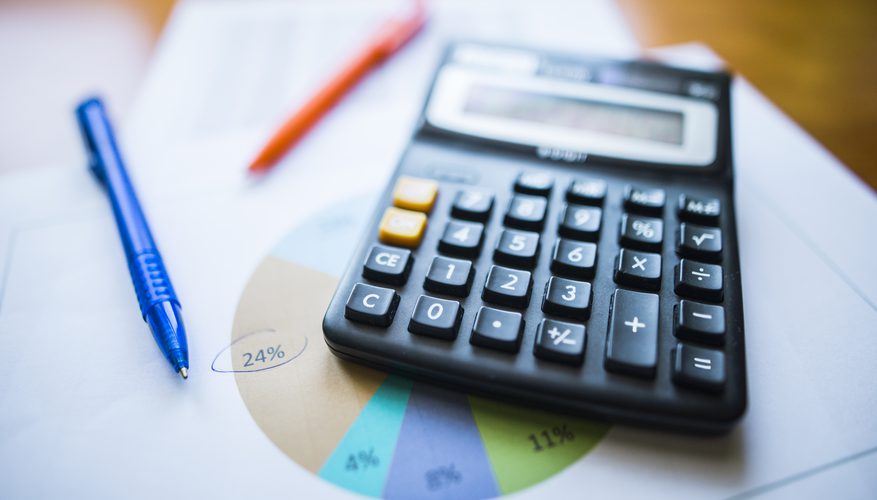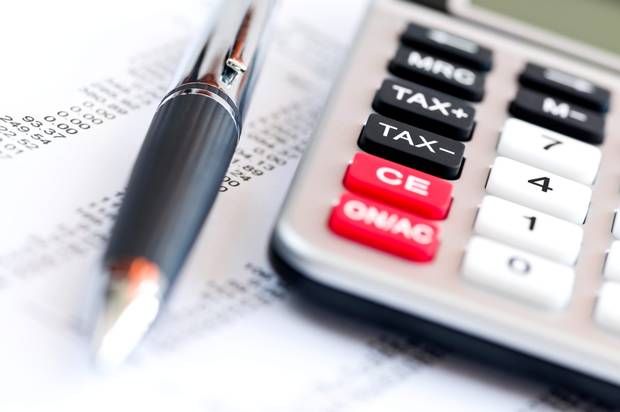Trade industry organizations conduct a large number of business operations related to goods turnover on a daily basis. The seller receives income through a trade margin on goods sold to him. In order for the trading activity to be truly profitable, it is necessary that the premium cover all costs incurred by the company as a result of sales activities.
When a company enters the market with its goods, the first question that the management faces is what level of price and cost of goods should be set taking into account the trade allowance.
The level of trade allowance is a significant indicator of a company's competitiveness. In this article, we will provide information on how to make a premium on the product and what parameters should be used in the calculations.
Concept
The main goal of the business is to receive regular income. When doing business poorly, an entrepreneur may encounter problems such as lack of customers and reduced customer demand. In such a situation, a business may become unprofitable, which will make it necessary to close the company. Considering the above, we can conclude that the question of the proper appointment of a trade margin is relevant for the company. The margin should take into account all the costs of the company in the sale of products on the market.
Trade margin is a premium on the purchase price of the goods to receive income from its sale. All taxes levied on goods are included in an additional fee, i.e. a trade allowance. The level of the trade allowance should be chosen in such a way as to fully compensate for the costs incurred by the seller, as well as include the amount of profit that he will receive after the sale of his goods.
That is, the selling price of a product is equal to the purchase price with a trade margin added to it. This indicator is only the seller’s income. If the goods sold to him are subject to VAT, this should also be taken into account when setting the mark-up.
Trade markup is an indicator that consists of three main elements:
- the amount of costs associated with the sale of goods;
- the amount of tax payments that are included in the price of goods, that is, are paid directly from the income of the commercial enterprise (these include VAT, excise taxes, customs duties and excise taxes;
- the amount of profit from the sale of goods (before taxes from it).

Basics of calculation
To determine the optimal level of margins, you must initially establish the amount of expenses that was associated with the acquisition and purchase of goods. To these costs should be added the amount of transport costs for the delivery of goods that occupy the lion's share in the structure. If the seller is also a producer of products at the same time, then in the cost structure he must take into account the cost of materials, the amount of taxes, the payment of wages of production personnel and other expenses.
All these expenses are summed up and taken into account further when establishing a trade margin. It also includes the amount of estimated profit for the entrepreneur.
It is necessary to recall such a concept as threshold value. It determines the threshold value of the price at which the amount of profit for the entrepreneur is zero, but its costs are fully covered by the price of the goods. It is impossible to go below this threshold in the marketing policy, since such a situation will lead to the loss-making of the enterprise. Exceeding the threshold allows the entrepreneur to make a profit.
The threshold cost depends on the industry in which the company operates. For different groups of goods from different industries, the mark-up level is also different.
An important factor in establishing margins is the criterion of elasticity. By it is understood the possibility of changing consumer demand depending on rising prices for a particular product.

Formation of trade allowance of trade organizations
Organizations have the right to independently make a premium on the retail sale of goods. At the same time, “Methodological recommendations on the formation and application of free prices and tariffs on goods, goods and services”, which were approved by a letter of the Ministry of Economy of December 6, 1995, can be used.
This document states that the definition of trade allowances is made in accordance with market conditions, consumer characteristics of goods and their quality. They should cover the amount of taxes, distribution costs, and also include company revenues.
The organization’s turnover costs are labor costs, transportation services, social contributions, rental and advertising expenses, depreciation charges, etc.
The current legislation contains the marginal trade margin for a number of commercial products. The state’s pricing policy is regulated when selling the following products: medicines, baby food, medical products, products produced in schools catering establishments, goods sold in the Far North and their equivalents.
The permissible level of trade allowances for the above products is determined by local executive structures. Prices for medicines are formed on the basis of legislative standards.

Calculation formula
Consider the formula for calculating the trade margin in percent. With a nominal trade margin, it is not difficult to determine in monetary terms.
Trading allowance is an indicator determined by the formula:
TH = ST × UTN,
where: TH - trade mark-up, rub.
ST is the cost of goods, rubles.
UTN - level of trade allowance,%.

Analysis of the dynamics of sales volumes helps to calculate the level of trade margins, actually formed after the sale.
Trade markup is an indicator that is determined by the following formula:
TH = (RV - ST) / ST,
where: RV - real income from the sale, rubles.,
ST - the cost of goods, rubles.
A serious economic indicator for determining the trade margin is the gross income received from the sale of goods. Calculate gross income based on the specifics of the accounting turnover, as follows.
Calculation of total turnover
Calculation is possible for the total turnover with the established single percentage of the trade margin. This method is rational if the goods sold have homogeneous characteristics. The calculation of gross income (VD) has a fairly simple formula:
VD = T × PTH / 100,
where: T is the total turnover equal to the amount of income, including all taxes, rubles .;
PTH - estimated trading margin, which is determined as follows:
PTH = TH / (100 + TH),
where: TH - trade margin, expressed as a percentage,%
Assortment calculation
The calculation can be carried out in accordance with the assortment of commodity circulation. This method is suitable for sales records for different product groups. Each group combines products with uniform characteristics and an individual trade allowance. Gross income can also be found in groups, and then determine the amount of trade allowances:
(T1 × PTH1 + T2 × PTH2 + ... + Tn × PTHn) ÷ 100,
where: T1, T2, Tn - goods turnover by groups of goods;
PTH1, PTH2, RTNn - settlement trading margins for groups, respectively.
Calculation of the average percentage
Calculation can be carried out in accordance with the average percentage established for the trade allowance. Small companies use this method because of the ease of calculation.However, the desired result will be averaged.
Gross income is as follows:
VD = T × СрТН / 100,
where: T - total turnover, rubles.
СрТН - the average trade margin of goods sold, which is calculated by the formula.
The average trade allowance is an indicator determined by the formula:
СрТН = (ТНН + ТНП - ТНВ) / (Т + ОК) × 100,
where: TNN - trade margin at the beginning of the period;
TNV - trade margin for goods received;
ТНВ - trade margin for retired goods or retired;
OK - balance at the end of the reporting period, rubles.
Balance calculation
A method based on compliance with the assortment of the remaining goods. Compared with the previous one, it gives a more accurate result, but it takes a lot of time. It is appropriate to use special software for small enterprises, which keeps records by barcodes.
Here, gross income will be calculated according to a simple principle:
VD = TNN + TNP - TNV - TNS,
where: TS - trade margins at the end of the period.

Wholesale
The margin on wholesale is always formed by a specific calculation of planned costs. An intermediary wholesaler, as a rule, independently sets a premium based on some parameters, mainly due to the specifics of the enterprise.
Wholesale trade allowance takes into account the following factors:
- prices of the commodity producer at which the wholesaler accepts the goods;
- it is necessary to take into account the characteristics of individual groups of goods, such as shelf life, product popularity among end users, the turnover of this group;
- The next item is the cost of storage at the warehouse of goods, possible losses during storage, including devaluation. This also includes transportation costs, staff costs, rental costs, communication costs, office expenses and many other costs that need to be taken into account;
- the cost of certain groups of goods is regulated by the state, in these cases the price ranges for the wholesaler are limited;
- The final cost to the consumer always includes taxes and fees that must be paid by both the wholesale intermediary and the retailer.
Ultimately, the margin in wholesale is determined from a specific calculation of the economic feasibility of the enterprise. Thus, the wholesale trade allowance of enterprises that sell passively can be very different from the margins of competitors who actively trade through sales representatives.
The final cost of the goods in the wholesale determines the profit of the wholesaler. Indeed, without this mark-up in wholesale trade, the existence of an enterprise would in principle have no practical significance.

Retail
To fix the level of trade allowance, it is necessary to apply the register of retail prices. This document has free access, but there are some requirements for its content. The registry must necessarily include information such as:
- Name of the organization;
- Organization product names
- the purchase price of the goods (VAT not included);
- price premium;
- amount of VAT;
- retail value of goods.
For business efficiency, it is necessary to set the price of goods so that the seller has the opportunity to make a profit, as well as to cover all costs associated with the sale. But at the same time, the reevaluated cost of goods will lead to a lack of demand for them, which may entail financial losses. In order to most effectively sell a product, you must be able to competently approach the pricing of it and take into account a number of functions.
Most novice businessmen use the method of determining the same percentage of premium for a particular group of products. Other companies examine competitor data and set similar costs. Both of these methods allow you to increase sales, which positively affects the amount of profit.When assigning a trade allowance, an entrepreneur must take into account the quality of goods sold and the level of consumer demand for this group of goods.
There are three main retail methods for mark-ups:
- assignment of the same mark-up for all offered products;
- premium calculation for each product group;
- average margin for the entire range.
It so happens that goods from different suppliers arrive at the warehouse at various intervals. However, these products should be sold at the same rate. In this case, a single price and a different premium level are assigned to the product. It is important to note that the realized trade margin is a dynamic indicator. Its value is closely interrelated with the level and speed of turnover. In some cases, revenue growth due to cost reduction can adversely affect business productivity.
Reduction of the realized trade allowance in order to stimulate the volume of products sold is recommended only in case of favorable conditions. To reduce costs, you can use special tax regimes, reduce the sales area or the number of employees.
The optimal level of trade margins and trade margins is set for each of the product groups:
- jewelry, souvenirs and accessories - more than one hundred percent;
- spare parts for cars - from 30 to 65 percent;
- household chemicals and stationery - from 25 to 65 percent;
- cosmetics and perfumes - 25-75%;
- shoes and clothes - 40-110%
- food - from 10 to 35 percent.

Purchase price as an element of the trade allowance
It is necessary to determine all the costs incurred by the seller for the sale of goods. They mainly include transport services and the purchase of goods. When the seller of the goods manufactures himself, it is necessary to take into account the cost of those materials that are necessary for its manufacture. Costs incurred by the seller must be added to the margin and the purchase price of a particular product.

Information in conclusion
Summing up the consideration of the question of what is the margin on the product, we can conclude that this indicator contains information about the financial well-being of the company. The correct approach to pricing allows you to increase sales, which will positively affect the amount of income received.
